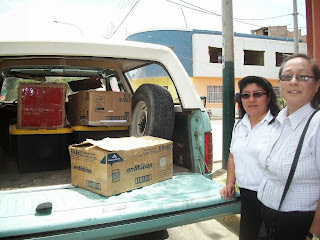When the St. Paul delegates traveled to Peru in June, Sr. Monica, director of St. Clare School, expressed a concern over the lack of health care in her community. Many families don’t make enough money to feed their families, yet alone, go to the doctor. One of her dreams...Provide basic medical treatment and physicals provided by a medical mission team.
St. Paul Parish is going to do just that. We’re going to make Sr. Monica’s dream come true. Our first medical trip to Peru will be leaving on June 23 and returning on July 1, 2014. Are you a healthcare professional such as a doctor, nurse, or pharmacist and would like to partake in a medical mission? It is not necessary for you to speak Spanish. We are also in need of bilingual translators. Interested?? Please email Miranda “Charlie” Spindt, PA-C, at charlie@spindt.com.
Besides medical professionals, we are in need of many volunteers to help plan this trip, write letters to outside companies asking for donations, packing, communicating with the students of St. Clare, and much more. Would you like to help? Please email Deb Passino at zipperdmp@gmail.com.
St. Paul Parish is going to do just that. We’re going to make Sr. Monica’s dream come true. Our first medical trip to Peru will be leaving on June 23 and returning on July 1, 2014. Are you a healthcare professional such as a doctor, nurse, or pharmacist and would like to partake in a medical mission? It is not necessary for you to speak Spanish. We are also in need of bilingual translators. Interested?? Please email Miranda “Charlie” Spindt, PA-C, at charlie@spindt.com.
Besides medical professionals, we are in need of many volunteers to help plan this trip, write letters to outside companies asking for donations, packing, communicating with the students of St. Clare, and much more. Would you like to help? Please email Deb Passino at zipperdmp@gmail.com.
“We never lose if we imitate Jesus, if we serve our suffering brothers”
~ Pope Francis
~ Pope Francis

















































